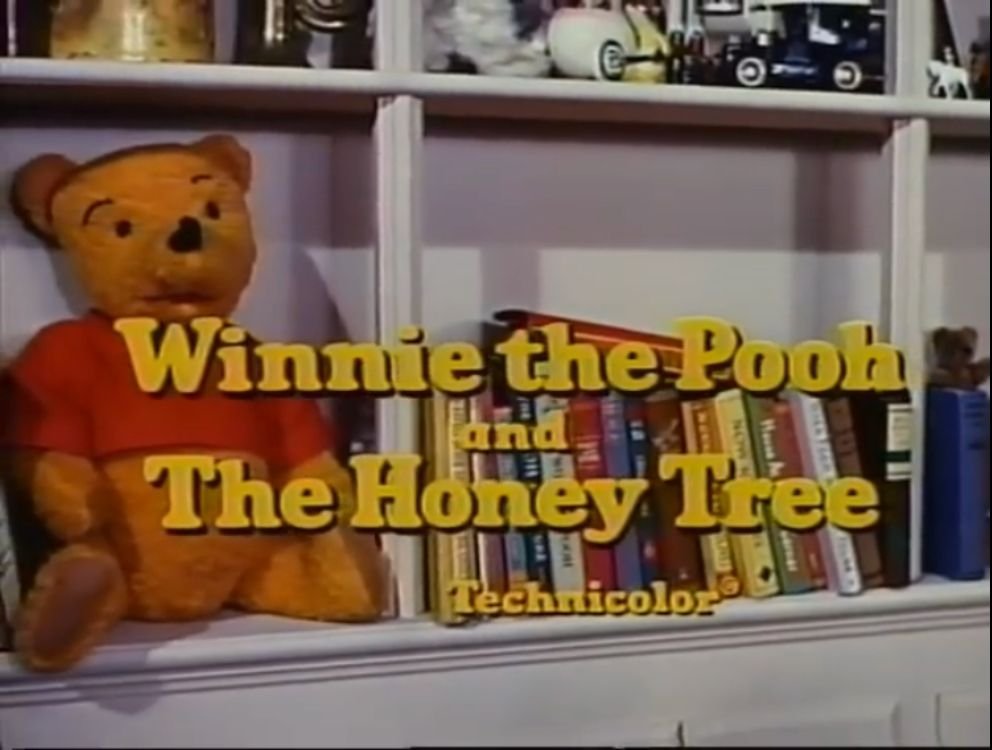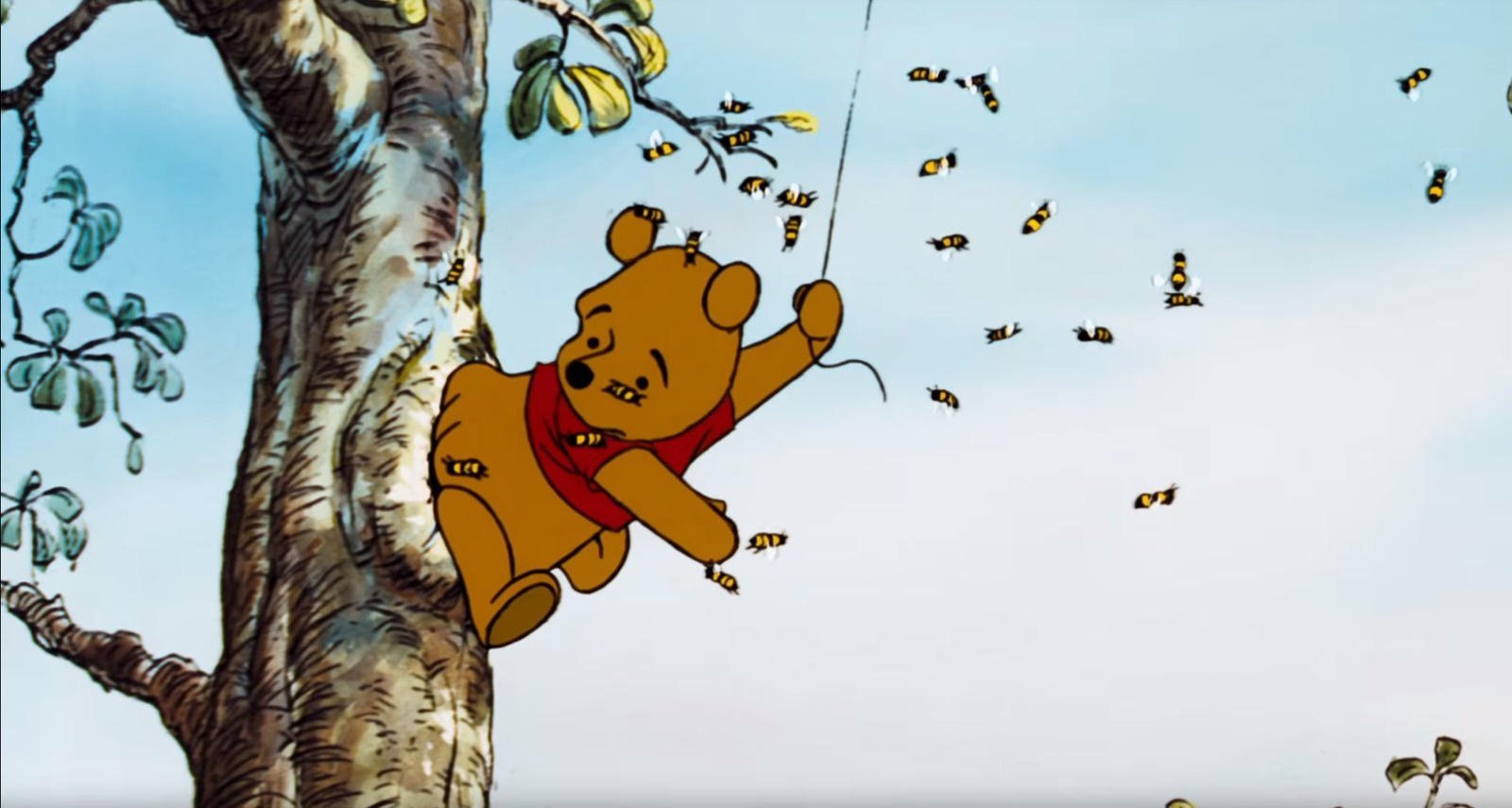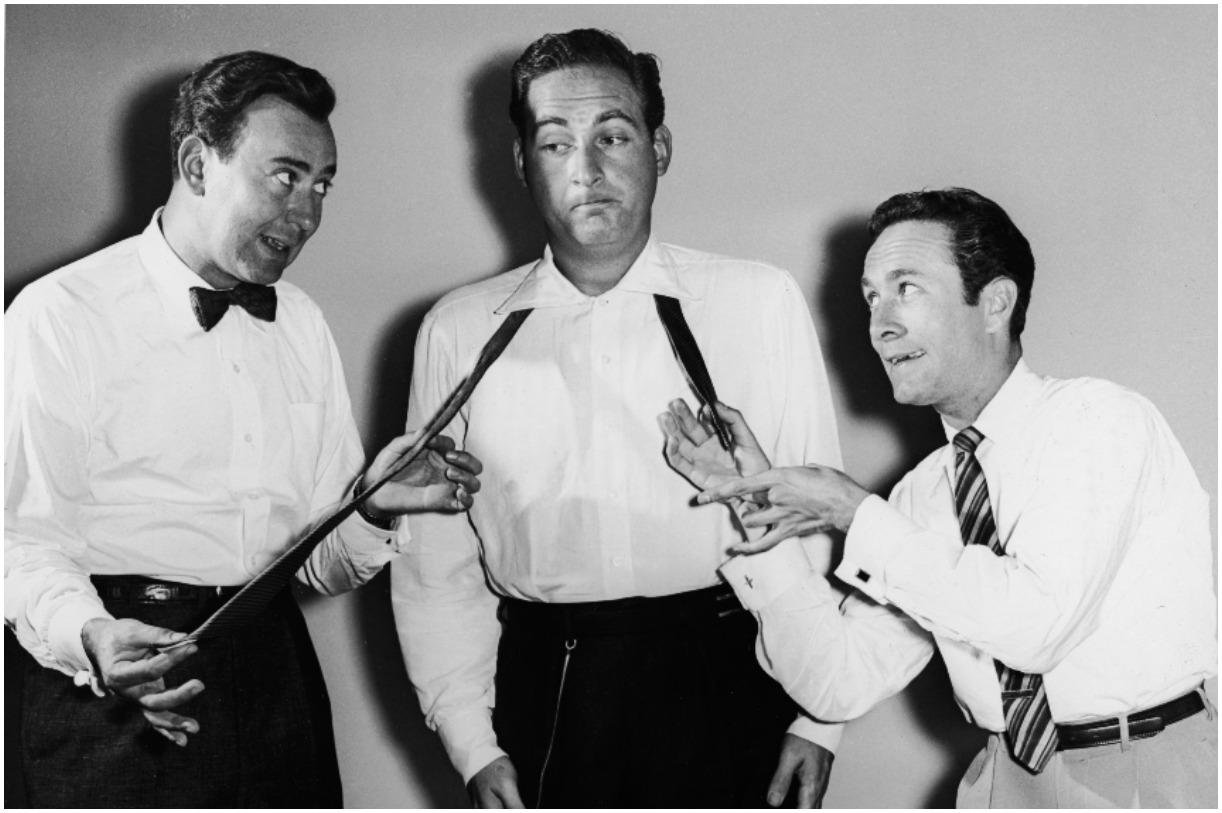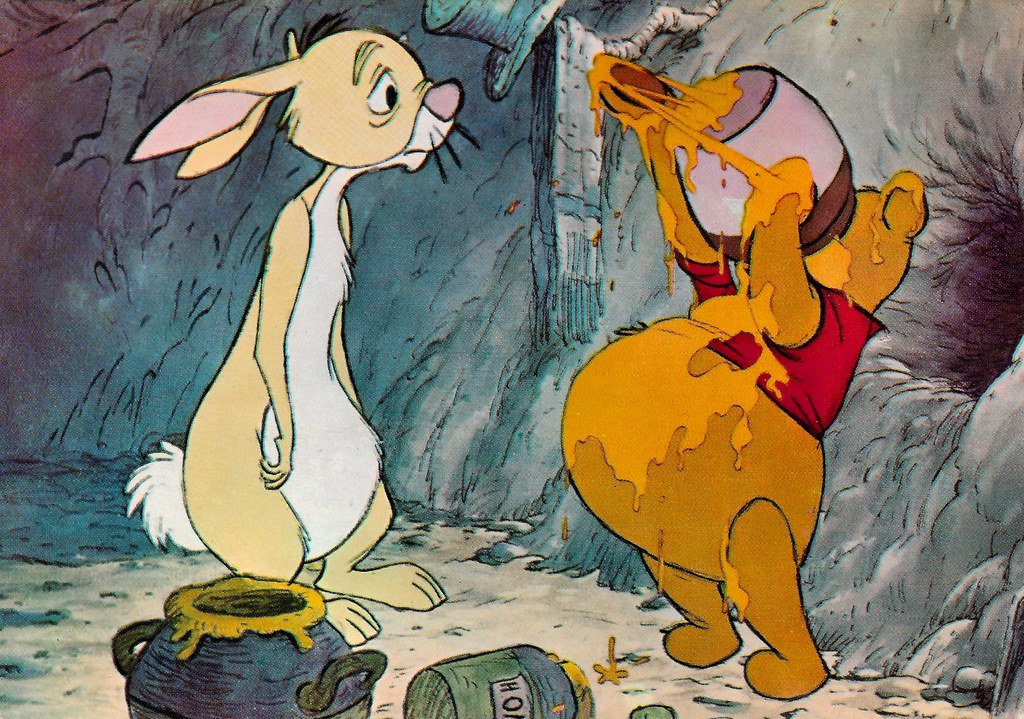The Original Voices of the Winnie the Pooh Characters
One of my most popular blog posts so far is The Struggle for the Rights of Winnie-the-Pooh, where I’ve laid out A.A Milne’s experience selling the story, the first pieces of merchandise ever for the franchise, and how Disney ended up acquiring the rights for films after many legal battles. The very first Pooh film was an exciting project for the company, as well as for Walt, as he had read his daughters the Pooh bear stories when they were young. Luckily, Walt was alive to see Winnie the Pooh and the Honey Tree debut in February 1966, the very first of many stories to come along with our cuddly honey-loving friend.
Winnie the Pooh and the Honey Tree
After accessing the film rights for Winnie the Pooh, the studio got to work on creating a featurette (short film) rather than a full-length animated piece. Wolfgang Reitherman was selected to direct it, who had been animating for Walt since 1934 and had just finished directing 101 Dalmatians (1961) and The Sword in the Stone (1963). The Sherman Brothers were chosen to write the music for the short, where the iconic “Winnie the Pooh” theme song made its debut.
Winnie the Pooh and the Honey Tree. Image from: https://www.pinterest.ca/pin/731623901941934393/
Winnie-the-Pooh by A.A Milne
The plot was inspired by the first 2 chapters of the first original Winnie-the-Pooh book by A.A Milne. In the first chapter, Winnie-the-Pooh hears a buzzing sound coming from a tall oak tree just outside of his front door. He starts to put together that it is bees making the buzzing sound, and that wherever there are bees, there is honey. He starts to climb up the tree, but once he gets to the top, the branch he is on breaks. Dusting himself off, he walks to Christopher Robin’s, where he asks for a balloon so he can float up to the top of the tree for his honey. This plan doesn’t end up working out, and Pooh’s arms stay stiff for a whole week from holding onto the balloon.
“‘What do you want a balloon for?’ you said. Winnie-the-Pooh looked round to see that nobody was listening, put his paw to his mouth, and said in a deep whisper: ‘Honey!’”
Winnie the Pooh and The Honey Tree. Image from: https://www.deviantart.com/silverjeff303/art/Pooh-Bear-Got-His-Bottom-Stuck-In-The-Honey-Tree-713767139
In the second chapter, Pooh comes across Rabbit’s hole in a bank of sand. Rabbit invites him in for some bread, honey, and condensed milk, and Pooh hopes to have multiple helpings. On his way out, Pooh gets stuck in the hole. Rabbit and Christopher Robin attempt to pull him out, but he is too bloated from his meal. They declare that Pooh must wait a week until he becomes slender enough to pop out of the hole, and in a weeks time after keeping him company, they are able to slide him out.
“I was just beginning to think,” said Bear, sniffing slightly, “that Rabbit might never be able to use his front door again. And I should hate that,” he said.”
The featurette made some additions to the story to make it more well-rounded, like adding the fact that Pooh was out of honey jars at the very beginning of the story. Eeyore, Owl, Kanga, and Roo were added at Christopher Robin’s house. Gopher is also added to the second part of the short where Pooh gets stuck at Rabbit’s house. Pooh also ends up getting stuck in a tree full of honey at the end of the film.
Winnie the Pooh and The Honey Tree. Image from: https://www.deviantart.com/waltwiz1901/art/55-Years-of-WINNIE-THE-POOH-AND-THE-HONEY-TREE-869296347
The Winnie the Pooh Voice Actors
Sterling Holloway (Winnie the Pooh)
Sterling Holloway was an American actor who began his career in the 1930s, on stage and in silent films. He performed in school plays growing up, and eventually landed comedic roles in television series and movies. He starred in many short films throughout the 1930s and guest starred on popular TV shows such as Adventures of Superman and The Andy Griffith Show.
Holloway’s very first voice acting job was with Disney, as he provided the voice for Mr. Stork in the 1941 version of Dumbo. He continued working for Disney and gave his voice to several other characters, such as the Grown Up Flower in Bambi (1943), Professor Holloway in The Three Caballeros (1944), the Narrator in the Peter and the Wolf segment of Make Mine Music (1946), the Narrator of Mickey and the Beanstalk (1947), and then he landed his first lead role in a Disney film, the Cheshire Cat in Alice in Wonderland (1951). His soft spoken yet haunting tone made him the perfect fit for the precarious cat.
Sterling returned to the film studio just over a decade later after doing more television work in and outside of Disney, and was chosen to be the voice of the title character, Winnie the Pooh, in Winnie the Pooh and the Honey Tree.
After Pooh bear, Sterling also voiced the roles of Kaa the Snake in The Jungle Book (1967) and Roquefort in The Aristocats (1970). He reprised his role as Pooh several times for the other Pooh shorts, as well as making an appearance on a few episodes of The Magical World of Disney.
“Sterling just had a unique voice. It was a high-tenor, raspy voice unlike anything you heard. Walt Disney was really enamored with him.”
In 1991, Sterling was honored as a Disney Legend. During his acceptance speech, he thanks Julie Andrews for being there, and just for being herself. Majority of his roles, including Pooh bear, were succeeded by Jim Cummings, who still voices Pooh today.
Sterling Holloway and Pooh bear. Image from: https://ritalovestowrite.com/2013/01/05/sterling-holloway-1-4-13-thought-of-the-day/
Bruce Reitherman (Christopher Robin)
Recognize the last name? Bruce Reitherman is the son of Wolfgang Reitherman, who was a long time animator at Disney, as well as the director for Winnie the Pooh and the Honey Tree. Bruce was 11 years old when he was chosen to voice Christopher Robin. Bruce also provided the voice for Mowgli in The Jungle Book a year later.
When Winnie the Pooh and the Honey Tree was shown in Britain where the story originates, there were many complaints that the voice for Christopher Robin wasn’t right, and that his accent was too American for the story. When the featurette was added to The Many Adventures of Winnie the Pooh film in 1977, parts of Bruce’s lines were redubbed and his role as Christopher was replaced by Jon Walmsley.
Bruce went on to follow similarly in his father’s footsteps, becoming a filmmaker, producing and directing his own TV series called Nature and The Living Edens.
Bruce Reitherman. Image from: https://www.mirror.co.uk/incoming/gallery/bruce-reitherman-12-year-7670410
Ralph Wright (Eeyore)
Ralph was a long time Disney animator who had been with the studio since the late 1930s. He wore many hats around the studio, including writer, animator, director, and actor. He started out in the storyboard department, putting concepts together for short films and feature-length films, including Bambi (1942), Peter Pan (1953), and Lady and the Tramp (1955). He wrote and directed Disney’s Perri in 1957 and the documentary short Siam in 1954. He was chosen to provide the glum voice for Eeyore and brought the character to life. He voiced Eeyore all the way up until his death in 1983 at the age of 75.
Ralph Wright. Image by: https://en.wikipedia.org/wiki/Ralph_Wright
Junius Matthews (Rabbit)
Junius Matthews grew up a performer, acting on stage, through radio, and eventually in silent films. Most of his career before working at Disney was through Broadway and stage performance, acting in productions such as The Taming of the Shrew and The Grand Street Follies. Matthews landed his first role at Disney as Scottie in 101 Dalmatians (1961). He then went on to voice Archimedes the owl in The Sword in the Stone (1963). And finally, his very last hurrah in the show business was as Rabbit in Winnie the Pooh and the Honey Tree. He continued to play Rabbit until his death in 1978.
Junius Matthews. Image from: https://twitter.com/gianoliii/status/1271664521791385602
Barbara Luddy (Kanga)
Barbara Luddy is a Disney veteran, whose soft yet enthusiastic voice was featured in 8 Disney films through the 1950s to the 1970s. Much like her counterparts in the Winnie the Pooh films, her career began in the 1920s in radio and silent films, slowly working her way up to voice acting and acting in feature films. Her first role was Janet in The Enemy of Men in 1925.
Barbara is best known for portraying Lady in Lady and the Tramp in 1955. She also played Merryweather in Sleeping Beauty (1959), and Rover in 101 Dalmatians (1961). Her last non-Pooh Disney feature was as the Mother Church Mouse in Robin Hood (1973). She was offered the role as Kanga, as her sweet, motherly voice provided the perfect amount of calmness that Kanga needed to balance out the other characters.
Larry Roberts and Barbara Luddy. Image from: http://andreasdeja.blogspot.com/2017/03/lady-tramp-mix.html
Clint Howard (Roo)
Clint Howard had star power in his blood, as his older brother Ron Howard is a popular filmmaker. Clint began his work in the business at the age of 3 years old, playing the role of Leon in The Andy Griffith Show. Since then, he has gone on to appear in some of Hollywood’s most famous movies and series ever, such as the Star Trek incarnations, Apollo 13, Seinfeld, Arrested Development, Splash, How the Grinch Stole Christmas, Austin Powers, and more. At the age of 7 years old he played the part of Roo, the curious little Kangaroo that hung out in his mother’s pouch. He played Roo until 1977, but is still acting today.
Clint Howard. Image from: https://en.wikipedia.org/wiki/Clint_Howard
Howard Morris (Gopher)
Howard Morris had a very fruitful career, and had a hand in creating and starring in many iconic series and films throughout his life. Like the latter, Morris starred as Ernest T. Bass on The Andy Griffith Show, one of the show’s most beloved characters. He was the director of the pilot episode of Get Smart, a successful comedy sitcom that ran for 5 seasons after. He was good friends with Carl Reiner, whom is a comedic writer best known for creating The Dick Van Dyke Show, and they worked together in the entertainment business a lot. Howard made his way into the voice acting department with his features in the iconic 1980s McDonald’s commercials as Mayor McCheese and the Hamburglar. His voice was featured in cartoons like The Flintstones, The Jetsons, and The Archies.
Morris played Gopher in the Winnie the Pooh franchise, a character who was added by Disney that did not appear in the original A.A Milne books. Gopher brought yet another dynamic to the group and brought more depth to the story of Pooh bear getting stuck at Rabbit’s house.
Howard Morris. Image from: https://famouspeopletoday.com/howard-morris/
Hal Smith (Owl)
Hal Smith got his start in the 1940s in television and continued to take on various comedic and dramatic roles through to the 1960s. Like his costars, he starred as Otis Campbell on The Andy Griffith Show. Smith gradually made his way over to cartoons and animated films, lending his voice to series like The Yogi Bear Show, The Bugs Bunny Show, and the Garfield series.
With Disney, Hal was able to distort his voice to take over certain Disney legends who had since passed on and needed someone to fill in for their roles. He was able to take over for Pinto Colvig, the voice of Goofy, Grumpy, and Sleepy. Hal voiced Goofy for several years between 1967 and 1987. His first originated role was Owl in Winnie the Pooh and the Honey Tree. He voiced Owl up until his death in 1994, and took over the role of Winnie the Pooh and Kaa the Snake for a few brief years after the death of Sterling Holloway.
Hal Smith. Image from: https://www.imdb.com/name/nm0808401/
Piglet and Tigger were not introduced until the 1968 featurette Winnie the Pooh and the Blustery Day.
Reference list:
https://www.imdb.com/title/tt0061199/
https://the-sherman-brothers.fandom.com/wiki/Winnie_the_Pooh(song)
http://www.yourskypeschool.com/book_yss_eng/winnie-the-pooh.pdf
http://www.daskalo.com/effectivecommunication/files/2017/12/Winnie-The-Pooh-1-78.pdf
https://www.imdb.com/title/tt0063819/
https://www.youtube.com/watch?v=1kKkbZZvqDg
https://variety.com/1992/scene/people-news/sterling-holloway-101558/
https://www.imdb.com/name/nm0001359/
https://www.imdb.com/name/nm0718624/
https://disney.fandom.com/wiki/Bruce_Reitherman
https://www.imdb.com/name/nm0942723/
https://en.wikipedia.org/wiki/Ralph_Wright
https://disney.fandom.com/wiki/Junius_Matthews
https://www.imdb.com/name/nm0560076/
https://disney.fandom.com/wiki/Barbara_Luddy
https://www.imdb.com/name/nm0524853/
https://www.imdb.com/name/nm0397212/


















